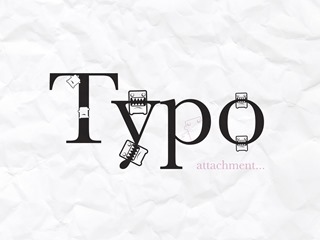 If you’re fed up with e-books that contain egregious errors, some help may be on the way, starting in February. After years of selling e-books that might have any number of typos or formatting errors within them, Amazon is finally taking some action. Or I should say, some further action. As Nate Hoffelder reported, Amazon has pulled e-books for “egregious” errors for several years now, replacing the listing with an “Item under review” boilerplate until it gets fixed.
If you’re fed up with e-books that contain egregious errors, some help may be on the way, starting in February. After years of selling e-books that might have any number of typos or formatting errors within them, Amazon is finally taking some action. Or I should say, some further action. As Nate Hoffelder reported, Amazon has pulled e-books for “egregious” errors for several years now, replacing the listing with an “Item under review” boilerplate until it gets fixed.
However, self-publishing authors started hearing from Amazon about reader-reported errors last November, and of late Amazon has emailed self-publishing authors a notice advising them that it will begin adding warning messages to Amazon store pages of books that have been found to contain multiple errors.
Starting February 3, 2016 we will begin showing customers a warning message on the Amazon.com Kindle store detail pages of books that contain several validated quality issues. We will remove this message for a book as soon as we receive the fixed file from you and verify the corrections — typically within 2 business days.
Only books with “several issues” will merit this notice, and books with “more serious quality issues” will still be removed from sale entirely as they have been already. Amazon’s KDP help page goes into detail about what sorts of errors a book might have—though the section at the end, where it talks about “Disappointing Content,” is a tad nonspecific, concluding with the remarkably general “Content that does not provide an enjoyable reading experience.”
KBoards is abuzz about the news, with authors discussing what sorts of errors might qualify and what to do about them. If the book should be flagged with spelling errors for made-up words, all that is necessary is to go through the list and note the words are not spelling errors, for example.
It remains to be seen whether this same standard will be applied to traditional publishers’ works. After all, self-published e-books these days were usually written directly on the computer, and any errors within them would be attributable to the author’s own mistakes. (Though such mistakes do happen.) However, the really egregiously error-laden books are those that were originally published before the electronic era and had to be scanned from paper copies—and those are almost always traditionally-published.
Some members of KBoards express doubt that this notification will apply to trad-pub, in the belief that big publishers generally don’t have a quick procedure in place for fixing such errors and Amazon wouldn’t want to offend them. But I wouldn’t be so sure.
If the reason Amazon is getting gung-ho about posting error notifications is that it doesn’t want to disappoint its readers (and, more cynically, wants to head off some of the extra administrative costs of having to refund e-books that customers discover are unreadably error-laden after buying), it will apply the new standard across all titles. After all, a customer won’t be any less disappointed if the disappointing work is from one of the Big Five. But since no Big Five publisher would ever publicly admit to having received such a notice itself, we have no way of knowing if they also received the warning.
Amazon hasn’t exactly been hesitant to offend traditional publishers in the past over unrelated issues—and it also hasn’t been afraid to draw fire for completely reissuing a Neal Stephenson title on account of typos. As such, I find it hard to believe it would cavil at offending publishers now over things that actually do make buyers return books. It might well be that Amazon hopes to get publishers to pay more attention to fixing such errors themselves when reported.
Regardless, there’s only one way to find out—wait until February and see if the notices start appearing on traditional publishers’ books, too. In any event, e-book lovers ought to find anything Amazon can do to make e-book typos less prevalent (and give e-book bashers one fewer motive) a welcome move.
(“Typo Attachment” by AmySimply used under a Creative Commons Attribution-No Derivative Works 3.0 License.)
































I wonder if block style, ragged right, or extra wide margins could count as disappointing content. I suppose it’s not quite the same as an author who uses grizzly for grisly or types tpyes for types, but it’s still disappointing to read a long book on a small Kindle screen with non-standard paragraph formats. So unless it’s something special within the context of the book, I say Amazon should count format irregularities as disappointing content.
I am deeply suspicious of this. It essentially allows Amazon to have access to a book’s content, go poking around in it, and post a formal statement on the product page that there are “errors.” If they would forward reported errors to a publisher (or author) and give them an opportunity to respond (fix or explain), that’s one thing. But this smacks of forcing book creators to allow Amazon to “review content” based on random reader complaints in the name of quality control, and hold out the threat of labeling a book as flawed.
Is this different from the access that Amazon has to e-books sold now? Or is this a new level of access?
Judging by the comments over at The Passive Voice, Amazon has had that level of access and inspection for years now.
It’s not new.
They should force a hanging ending, AKA buy the next book to get the ending to be disclosed in the description. As is now stands a few reviewers will mention this.